
Actiniidae is the largest family of sea anemones, to which most common, temperate, shore species belong. Most members of this family do not participate in symbioses with fishes. Three exceptions are the bubble-tip anemone, snakelocks anemone and Urticina piscivora.
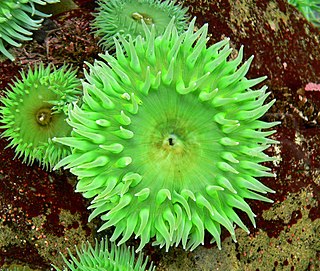
Anthopleura is a genus of sea anemones, of the family Actiniidae.

Spongia is a genus of marine sponges in the family Spongiidae, originally described by Carl Linnaeus in 1759, containing more than 60 species. Some species, including Spongia officinalis, are used as cleaning tools, but have mostly been replaced in that use by synthetic or plant material.

Cliona is a genus of demosponges in the family Clionaidae. It contains about eighty described species.
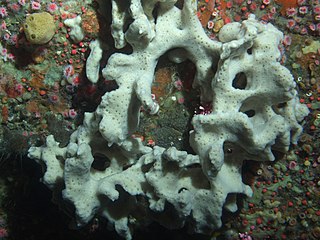
Ircinia is a genus of sea sponges in the family Irciniidae.

Amphimedon is a genus of sponges with over 60 described species. In 2009, Amphimedon queenslandica was the first species of sponge to have its genome sequenced.
Ptilocaulis is a genus of demosponges. The species within this genus are usually red or orange. They are often called tree sponges, as they grow many branches from a single stem resembling trees. They can grow to large size.
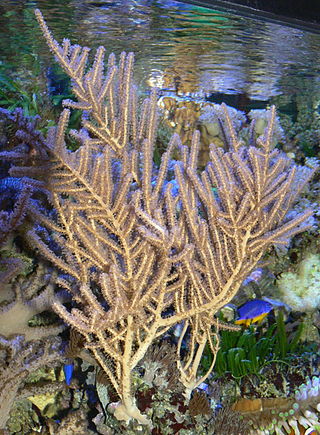
Holaxonia is a suborder of soft corals, a member of the phylum Cnidaria. Members of this suborder are sometimes known as gorgonians and include the sea blades, the sea fans, the sea rods and the sea whips. These soft corals are colonial, sessile organisms and are generally tree-like in structure. They do not have a hard skeleton composed of calcium carbonate but have a firm but pliable, central axial skeleton composed of a fibrous protein called gorgonin embedded in a tissue matrix, the coenenchyme. In some genera this is permeated with a calcareous substance in the form of fused spicules. Members of this suborder are characterized by having an unspiculated axis and often a soft, chambered central core. The polyps have eight-fold symmetry and in many species, especially in the families Gorgoniidae and Plexauridae, contain symbiotic photosynthetic algae called zooxanthellae. These soft corals are popular in salt water aquaria.
Allopathes desbonni is a species of coral in the family Antipathidae. It was described by Édouard Placide Duchassaing de Fontbressin and Giovanni Michelotti in 1864. The species is known from the Gulf of Mexico and from near the Lesser Antilles.
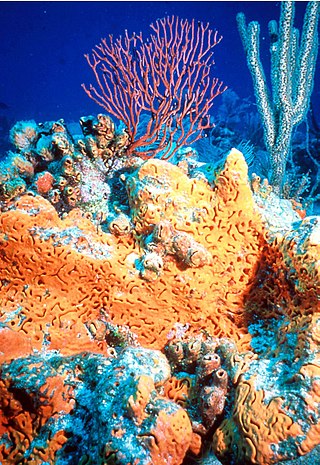
Agelas is a genus of sea sponge in the class Demospongiae.

Plexauridae is a family of marine colonial octocorals in the phylum Cnidaria. Members of this family are found in shallow tropical and subtropical seas. Many species contain symbiotic photosynthetic protists called zooxanthellae.
Édouard Placide Duchassaing de Fontbressin was a French naturalist. He is noted for his work in botany and spongiology.

Callyspongia is a genus of demosponges in the family Callyspongiidae.
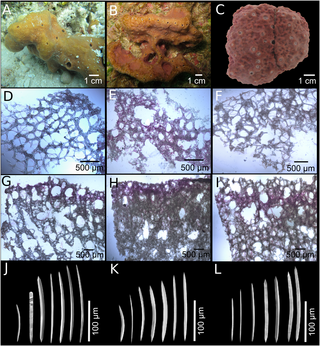
Neopetrosia proxima is a species of marine petrosiid sponge native to the tropical and subtropical waters of the western Atlantic Ocean.

Aiptasiidae is a family of sea anemones, comprising the following genera:

Bartholomea is a genus of sea anemones in the family Aiptasiidae.

Lebrunia is a genus of sea anemones in the family Aliciidae.
Neofibularia is a genus of sponges belonging to the family Biemnidae.

Hyrtios is a genus of sponges belonging to the family Thorectidae.















